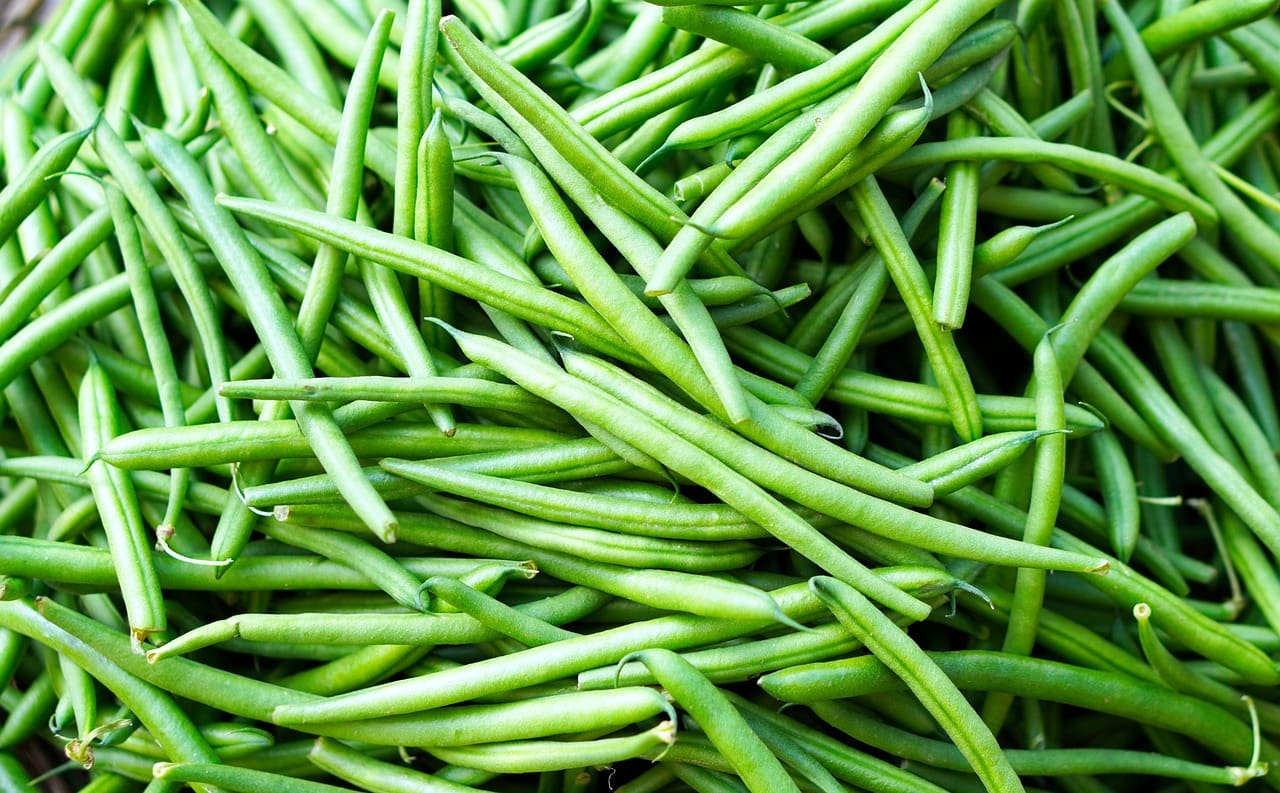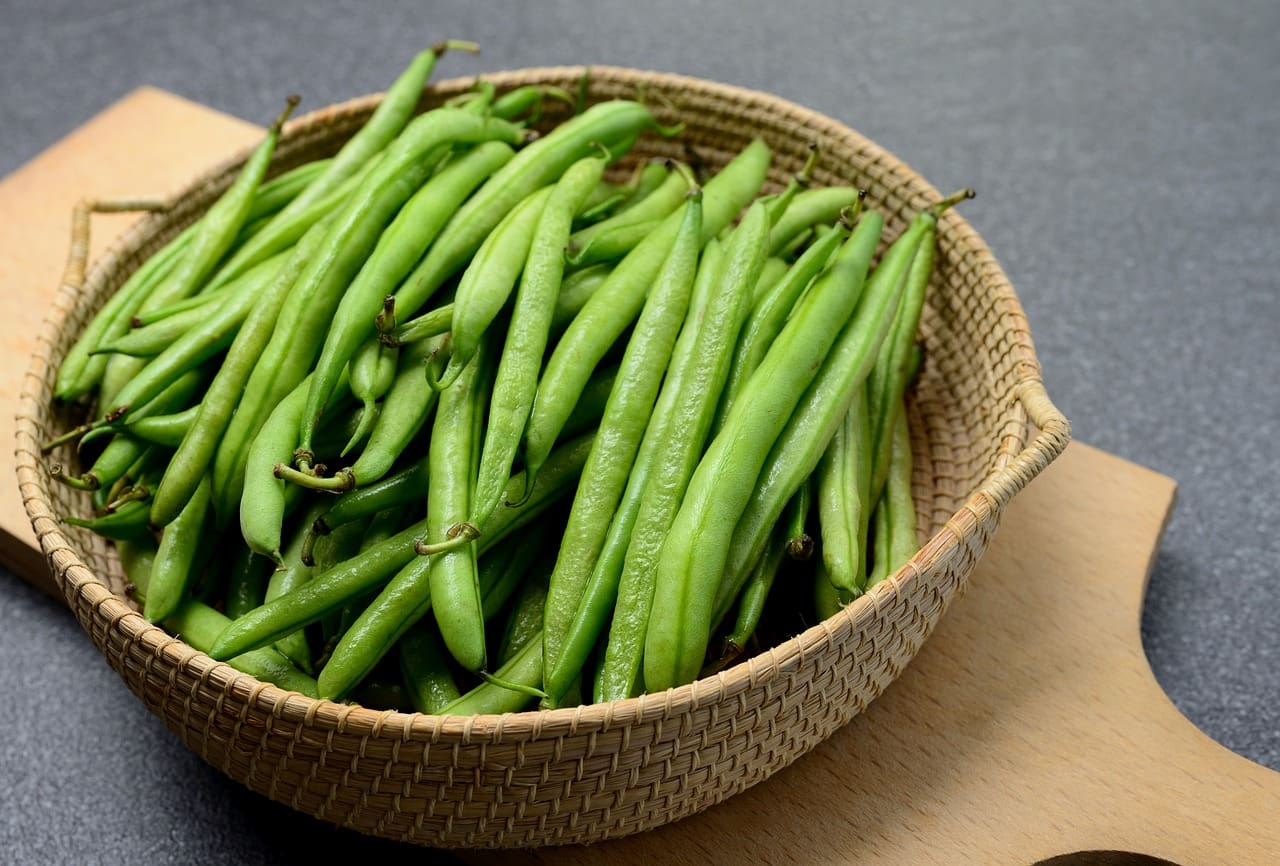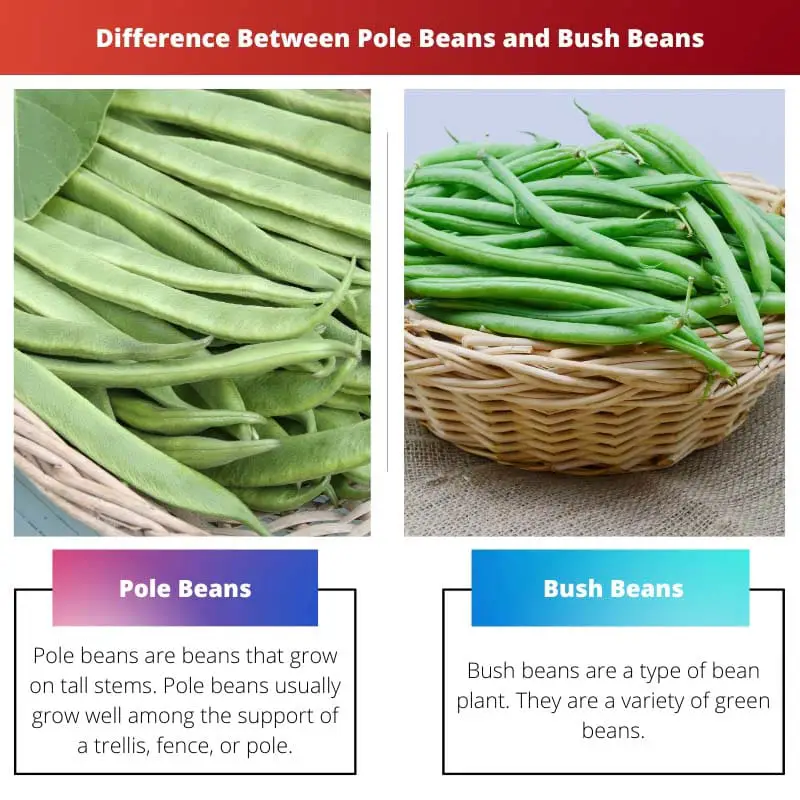Beans are an essential and nutritious part of our diet, but not all beans are created equal. Pole beans grow like a grapevine that needs a trellis or a fence to climb up, while bush beans will grow on the ground.
There’s a vast difference between pole beans and bush beans.
Key Takeaways
- Pole beans require support to grow vertically, while bush beans have a more compact growth habit and do not need support.
- Pole beans have a longer growing season and produce more than bush beans.
- Bush beans are easier to grow and maintain, making them suitable for smaller gardens and beginners.
Pole Beans vs Bush Beans
Pole beans are a type of bean that grow vertically and require support to climb on. Pole beans are grown for their edible pods. Bush beans are a type of bean that grow more horizontally and do not require any support to grow. Pole beans produce more beans than bush bean.

Pole beans are beans that grow on tall stems. Pole beans grow well among the support of a trellis, fence, or pole.
Pole beans are very convenient to grow, especially since they don’t need a lot of maintenance and they grow fast. This is also the reason why they are widely distributed.
Bush beans are a type of bean plant. They are a variety of green beans.
They are grown on a bush-like structure, hence the name. They are a great source of protein. All beans are a great source of protein, but bush beans tend to be lower in fat than others.
Comparison Table
| Parameters of Comparison | Pole Beans | Bush Beans |
|---|---|---|
| Type of Plant | Pole beans are climber plants. | Bush beans are considered to be herbaceous bush-like plants. |
| Type of Seed | Seeds of the pole bean plant are thinner and oval. | Seeds of the bush beans are rounder. |
| Protein content | Pole beans are considered to have lesser protein. | Bush beans are considered to have more protein content. |
| Yield | A single pole bean plant yields more fruit than bush beans. | Bush bean plants have comparatively lower productivity. |
| Harvesting | Pole beans are harvested in the summer season. | Bush beans are harvested in the winter seasons. |
| Space Requirement | Pole beans require vertical space and can be planted nearby. | Bush beans require more ground space. |
What is Pole Beans?
Pole beans are a very common type of bean. They are climbing and trailing plants and will grow to 3-5 feet tall.
Pole beans are a variety of beans that grow on a vine that goes up a pole or some other rigid support with the help of their tendrils.
They are also called String Beans, String-like Beans, and French Beans.
They produce edible beans that are harvested for their color and texture. The seeds are green and yellow.
Pole beans should be planted between April and June in a well-drained area with full sunlight. Pole beans are a good source of protein, vitamin C, and many minerals such as iron and magnesium.
They can be harvested at different times of the growing season. However, they need active pollinators.
Pole beans come in many different varieties, and it’s common to find them flavored with different spices, such as garlic and herbs, when turned into recipes.
Pole beans are a great addition to a home garden and can be eaten fresh or frozen to enjoy all throughout the year. Pole Beans can be used in many different kinds of dishes and are very nutritious.
Pole beans are a very popular vegetable in the garden that can be used in salads, curries, stir-fries, or any dish that includes beans.

What is Bush Beans?
What we call bush beans are the variety of beans with a growth habit of bush type. Bush bean is referred to as Phaseolus vulgaris.
It is an herbaceous plant that belongs to the family of legumes. It is a plant native to South America, even more specifically in Central America.
The plant can trace its ancestry to the pre-Incan era. The beans, which are green or yellow, are harvested within three months.
Bush beans can grow to be 1-2 ft tall.
They’re easy to maintain and don’t require a lot of maintenance. The thin and firm leaves of the beans are part of what makes them easy to care for.
The leaves are green, and when cooked, the beans can be yellow or gold. Bush beans can be eaten whole or ground. They can be used in stir-fry, soups, or casseroles.
Bush beans are more productive in small spaces, so they’re great to grow in containers or in a small garden which also makes them a commonly found plant.
In general, it is just a beans plant that does not have a tall height but grows in a bush-like plant. Their tendrils don’t climb up long distances, and they are also self-pollinators facilitated by their spread-out bush-like appearance.

Main Differences Between Pole Beans and Bush Beans
- Bush beans are different from pole beans because they don’t need to be pollinated by bees. This means they can grow on their own with their self-propelled seeds.
- Pole beans are tall, but bush beans are just more compact than pole beans meaning they don’t reach a high height, so they climb up a short trellis.
- Pole beans require more space between the plants. Bush beans can be planted more densely.
- Pole beans can reach up to 6 feet, while bush beans are more condensed and reach only 2 feet.
- Pole beans are very popular with many chefs and are easy to harvest but are more sensitive. The beans inside the pods are flat, thin, and oval-shaped. The beans in the pods of bush beans are round, fatter, and shorter.

- https://www.researchgate.net/profile/Pactli-F-Ortega-Gonzalez/post/Does_anyone_have_information_on_whether_French_beans_are_self_or_cross_pollinated/attachment/59d6232679197b80779817b2/AS%3A305658228871168%401449886008475/download/FrenchBean.pdf
- https://journals.flvc.org/fshs/article/download/92630/88822/0
- https://www.sciencedirect.com/science/article/pii/S0065211301710139/pdf?md5=fe6d8b0bf7c10e92ecd52a22a2a1b885&pid=1-s2.0-S0065211301710139-main.pdf





